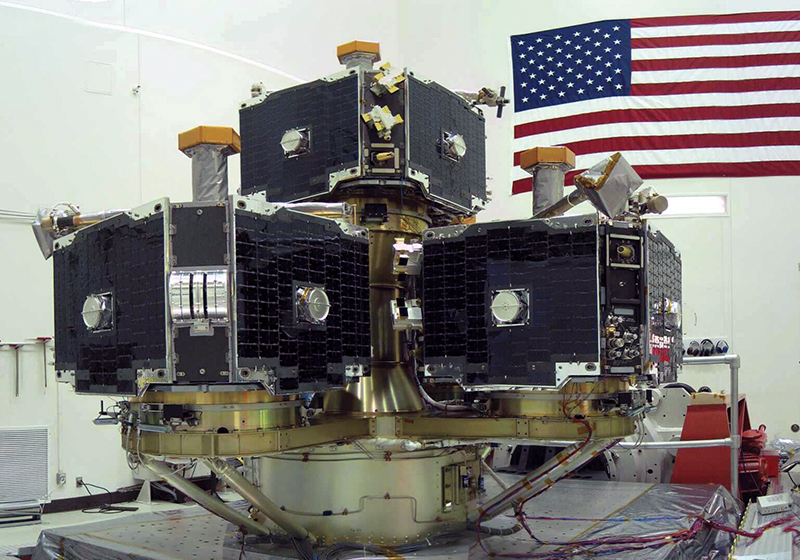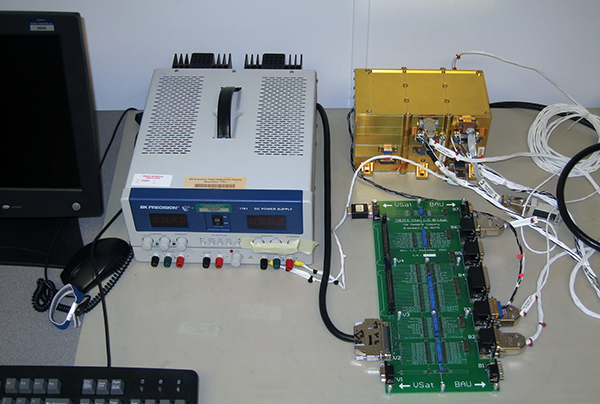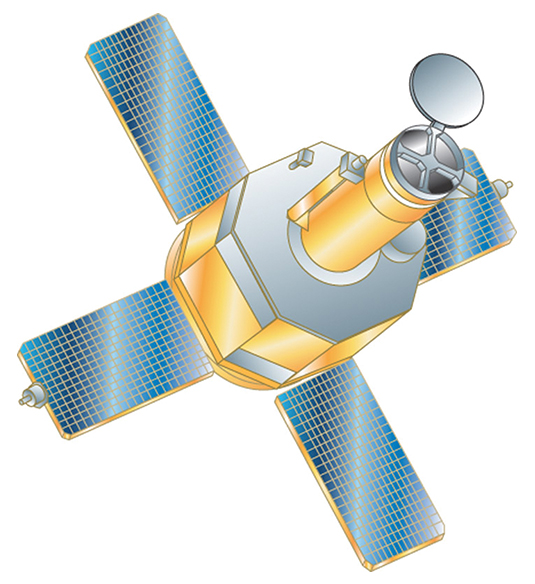
Tools Automate Spacecraft Testing, Operation
Originating Technology/NASA Contribution
Using the Spitzer Space telescope, NASA scientists detected light from two Jupiter-sized extrasolar planets for the first time in 2005. Findings like these are enabled in part by the Science Mission Directorate at NASA, which conducts scientific research enabled by access to space—such as Earth science, planetary science, heliophysics (the study of the Sun and its effects on Earth and the solar system), and astrophysics (the study of the universe and Earth-like planets).
In 1988, NASA began a Small Explorer (SMEX) program to develop low-cost, high-performance spacecraft to advance the science of astrophysics and space physics. One of these spacecraft, the Fast Auroral Snapshot Explorer (FAST), probed the physical processes that produce auroras, the displays of light that appear in the upper atmosphere in the Earth’s polar regions. Another spacecraft, the Transition Region and Coronal Explorer (TRACE), observed the connection between the Sun’s magnetic fields and the heating of the Sun’s corona. Additional spacecraft such as the Wide-Field Infrared Explorer (WIRE) studied the evolution of starburst galaxies and the search for protogalaxies.
To support these science-seeking missions, NASA began work on a software system to assist in developing and testing numerous types of spacecraft.
Partnership
As one of several commercial entities supporting the development of flight and ground software at Goddard Space Flight Center for NASA’s SMEX missions, the Hammers Company Inc. (tHC Inc.), of Greenbelt, Maryland, created an all-in-one software for the development, testing, and on-mission operation of spacecraft.
“The notion was to develop a capability for the engineers to build and test the components before they were integrated on a spacecraft. In years past, we would build the spacecraft and integrate all the components. Then if there was a problem, we had to open up the equipment, remove components, and make repairs. The ability to test the system and components before integrating them has decreased the risk, costs, and maintenance schedule,” describes Steve Hammers, a co-founder of tHC Inc.
Called the Integrated Test and Operations System (ITOS), the software successfully supported several SMEX spacecraft, and in 1999, the company exercised its option to make the ITOS software available commercially. Around the same time, tHC Inc. received Small Business Innovation Research (SBIR) funding from Goddard for a tool to facilitate the development, verification, and validation of flight software. Called VirtualSat, NASA has used the satellite simulation tool for various projects including the Earth Observer-1 mission.
As a testament to the success of ITOS, NASA is currently using the software to support 15 orbiting satellites, and has 6 additional mission applications in development. Recently, ITOS passed Goddard Space Flight Center’s orbital readiness review to manage three satellites in a multi-mission operations center. In addition, the company provided ITOS to the Lunar Reconnaissance Orbiter (LRO) mission experimenters to test instruments before launch.
Product Outcome
Together, the technology developed with NASA—ITOS and VirtualSat—has created and saved more than a dozen jobs for tHC Inc. Both ITOS and VirtualSat are currently being used by commercial entities in the aerospace industry.
A main advantage of the NASA-derived technology is its flexibility across different systems. “ITOS systems can be adapted and customized for a variety of requirements. The design is modular, so for every mission that comes up, we don’t have to reinvent the wheel. It takes the system we have and modifies the components to meet new requirements,” says Hammers.
ITOS and VirtualSat have been used to support the development of science instruments, spacecraft computer systems, command and data handling and guidance, and navigation and control software. By utilizing these tools early in the development cycle, the costs and risks associated with database conversions, training, validation, and maintenance can be reduced. Some of the entities using VirtualSat include Swales Aerospace (acquired by ATK), the U.S. Naval Research Laboratory, and Litton Industries (now a part of Northrop Grumman). Some of the entities using ITOS include the Canadian Space Agency, the University of California at Berkeley, and the Naval Research Laboratory.
As one of the company’s first commercial clients, the Canadian Space Agency applies the software for multiple satellites. After 1 week of training, the agency was able to use ITOS independently. “We train users to make their own database in just a short period, and then they are off and running. A knowledge base is formed from instructions the operators make. Then ITOS will manage the commands, point the antenna, receive the telemetry, process the telemetry, send messages, and perform health and safety monitoring—all without human operators,” says Hammers.
In support of NASA’s Time History of Events and Macroscale Interactions during Substorms (THEMIS) mission, UC Berkeley manages a constellation of five satellites. There are usually no operators in the control room for THEMIS, because ITOS automatically sends commands to the antennas. The Universal Space Network, a provider of space operations, telemetry, tracking, and control services, also uses ITOS to control its antennas around the world.
As far as potential applications go, Hammers says ITOS could be used in factories and hospitals to monitor and control operations from a central location, as well as for controlling operations (like the opening and closing) of dams. “ITOS could potentially be used with any applications that have enormous amounts of data, typically engineering-related data, that needs to be received, processed, and monitored, and have the ability to communicate back to the devices,” he says.
For both Hammers and his employees, NASA has been an inspiring force. “The synergy resulting from the partnership with NASA is more than just a business proposition. It creates excitement in our field that formulates new ideas, the development of leading-edge solutions, and draws some the best talent in the software field,” says Hammers. “Our company is filled with very talented and excited employees, which is possible through our NASA relationship.”

Employed across the aerospace industry, the bridge in the lower right-hand corner of the image above was designed by tHC Inc.

The Transition Region and Coronal Explorer (TRACE) spacecraft, shown here in an artist’s rendering, launched in 1998 to explore the Sun and to define the upper solar atmosphere known as the Transition Region and Corona.

The Hammers Company Inc.’s (tHC Inc.) VirtualSat systems supported spacecraft flight software development and testing, as well as spacecraft environmental testing and checkout, at the Jet Propulsion Laboratory for NASA’s Time History of Events and Macroscale Interactions during Substorms (THEMIS) mission.













